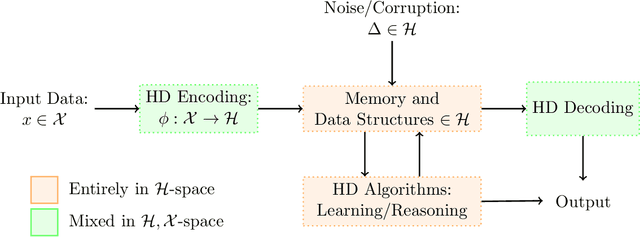Theoretical Foundations of Hyperdimensional Computing
Paper and Code
Oct 14, 2020
Hyperdimensional (HD) computing is a set of neurally inspired methods for obtaining high-dimensional, low-precision, distributed representations of data. These representations can be combined with simple, neurally plausible algorithms to effect a variety of information processing tasks. HD computing has recently garnered significant interest from the computer hardware community as an energy-efficient, low-latency, and noise robust tool for solving learning problems. In this work, we present a unified treatment of the theoretical foundations of HD computing with a focus on the suitability of representations for learning. In addition to providing a formal structure in which to study HD computing, we provide useful guidance for practitioners and lay out important open questions warranting further study.
 Add to Chrome
Add to Chrome Add to Firefox
Add to Firefox Add to Edge
Add to Edge